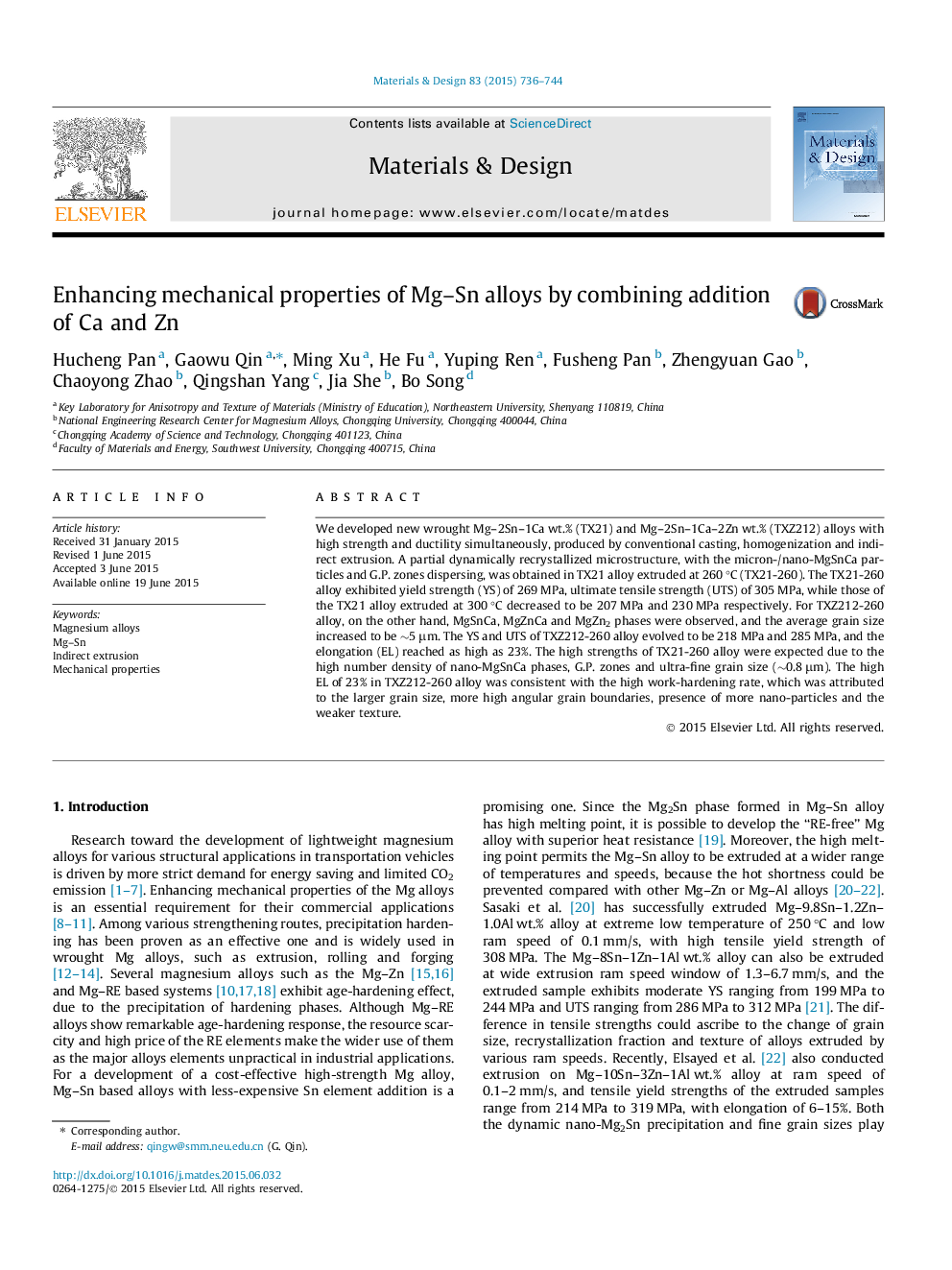| Article ID | Journal | Published Year | Pages | File Type |
|---|---|---|---|---|
| 828487 | Materials & Design | 2015 | 9 Pages |
•The new wrought Mg alloy system, Mg–Sn–Ca and Mg–Sn–Ca–Zn were developed.•High tensile strength of the Mg–Sn–Ca alloy resulted from the nano-MgSnCa phases, G.P. zones and ultra-fine grain size.•High elongation to failure of 23% in Mg–Sn–Ca–Zn alloy was consistent with the high work-hardening rate.•Work-hardening rate was related to the grain size, grain boundaries, nano-particles and texture.
We developed new wrought Mg–2Sn–1Ca wt.% (TX21) and Mg–2Sn–1Ca–2Zn wt.% (TXZ212) alloys with high strength and ductility simultaneously, produced by conventional casting, homogenization and indirect extrusion. A partial dynamically recrystallized microstructure, with the micron-/nano-MgSnCa particles and G.P. zones dispersing, was obtained in TX21 alloy extruded at 260 °C (TX21-260). The TX21-260 alloy exhibited yield strength (YS) of 269 MPa, ultimate tensile strength (UTS) of 305 MPa, while those of the TX21 alloy extruded at 300 °C decreased to be 207 MPa and 230 MPa respectively. For TXZ212-260 alloy, on the other hand, MgSnCa, MgZnCa and MgZn2 phases were observed, and the average grain size increased to be ∼5 μm. The YS and UTS of TXZ212-260 alloy evolved to be 218 MPa and 285 MPa, and the elongation (EL) reached as high as 23%. The high strengths of TX21-260 alloy were expected due to the high number density of nano-MgSnCa phases, G.P. zones and ultra-fine grain size (∼0.8 μm). The high EL of 23% in TXZ212-260 alloy was consistent with the high work-hardening rate, which was attributed to the larger grain size, more high angular grain boundaries, presence of more nano-particles and the weaker texture.
Graphical abstractFigure optionsDownload full-size imageDownload as PowerPoint slide
